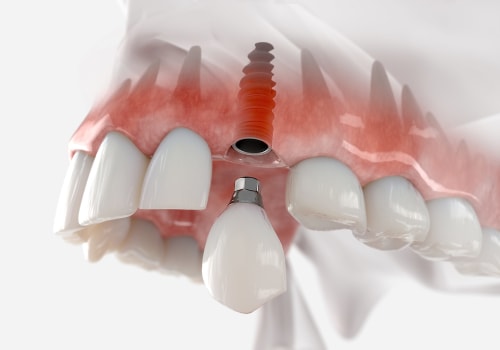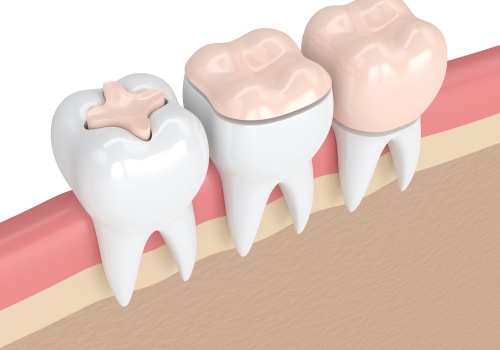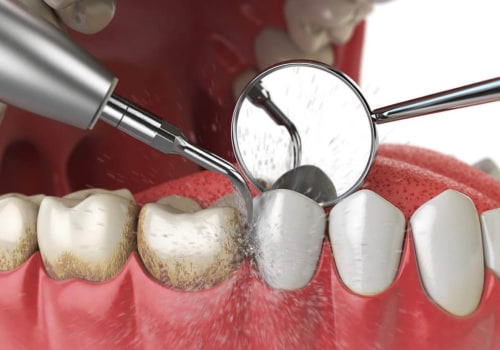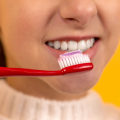For many people, the thought of undergoing any type of dental procedure can be a daunting one. But understanding the basics of dental implants and bridges can help ease anxieties and provide a more informed decision-making process. Dental implants and bridges are two popular treatments used to replace missing teeth or address issues with existing teeth. They both offer a strong, stable, and aesthetically pleasing solution that can be used to restore a person's smile. But there are differences between the two options, and it's important to understand what they are before making a decision. In this article, we'll explore the different aspects of dental implants and bridges, so you can make the best choice for your dental health.
Dental implants
are artificial tooth roots made of titanium or other metal alloys that are surgically placed into the jawbone.Over time, the bone bonds with the metal to create a strong and stable foundation for replacement teeth. They are an excellent option for replacing a single missing tooth, several missing teeth, or even a full set of teeth. Dental implants can also be used to support a fixed bridge or denture. There are several types of dental implants, including titanium, zirconia, and ceramic.
Titanium is the most common type of implant, as it is strong and durable. Zirconia implants are made from zirconium oxide, a white ceramic material that can be colored to match your natural teeth. Ceramic implants are made from porcelain and are designed to provide a more natural look.
Dental bridges
are one of the most popular solutions for replacing missing teeth.A bridge is a false tooth (or pontic) supported by two or more crowns on either side of the gap created by the missing tooth. Traditional bridges consist of two crowns attached to two adjacent teeth and the pontic in between. Cantilever bridges consist of only one crown attached to an adjacent tooth and the pontic in between. Maryland bridges consist of a metal or porcelain framework with a false tooth attached to it, which is then bonded to the adjacent teeth.
The advantages of dental bridges include restoring one's smile and bite, strengthening existing teeth, and preventing remaining teeth from shifting out of place. However, they may require more frequent adjustments than implants since they rely on adjacent teeth for support. Bridges may also need to be replaced more frequently than implants due to wear and tear from biting and chewing forces. Proper care of dental implants and bridges is essential for maintaining their longevity and preventing complications.
Good oral hygiene is key, including brushing at least twice a day, flossing daily, and using an antiseptic rinse. Regular visits to the dentist are also important for monitoring the health of your implants and bridges. Additionally, it is important to eat a healthy diet that does not damage your existing teeth or your implants and bridges. Possible complications with dental implants and bridges include infection, nerve damage, sinus problems, and fracture. If any of these occur, they should be treated promptly in order to prevent further damage.
Dental implants can last for many years with proper care and maintenance. However, they may need to be replaced after 10-15 years due to wear and tear or changes in the bone structure. Dental bridges generally last 5-7 years before needing to be replaced due to changes in the gum tissue or breakage due to biting forces.
The Benefits of Dental Implants and Bridges
Dental implants and bridges are two of the most popular solutions for replacing missing teeth. They offer several benefits that can help you restore your smile and improve your oral health.The improved appearance of your smile is one of the primary advantages of dental implants and bridges. Not only do they look natural, but they also help restore the shape of your face and improve the alignment of your teeth. Having dental implants and bridges can also improve your chewing ability, as it can help restore the strength of your bite. This can make it easier for you to eat food without discomfort, and can also help you avoid further tooth damage.
In addition, dental implants and bridges can improve your speech. If you have missing teeth, it can be difficult to pronounce certain words or phrases correctly. However, having dental implants or bridges can help you speak more clearly. Having dental implants or bridges can also boost your self-confidence.
Having a full set of teeth helps you feel more confident when you are smiling or speaking in public. Finally, having dental implants and bridges can help improve your oral health. Having a full set of teeth can help reduce the risk of gum disease, as it helps keep the gums healthy and strong. It also helps prevent tooth decay and other oral health problems. In conclusion, dental implants and bridges are two of the most popular solutions for replacing missing teeth.
They can improve your appearance, chewing ability, speech, and self-confidence. However, it is important to understand the potential risks associated with these procedures before making a decision. Additionally, proper oral hygiene and regular visits to the dentist are essential for achieving the best results and maintaining long-term success.






